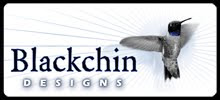
A delicate symbol of the ephemeral joys of spring. Or something to shoot when there aren't any birds around.
Spring migration season has officially hit Florida, according to several reliable sources. These sources say that big flocks of warblers are passing overhead even as I type this, and that feeders all across Gainesville are swarming with Indigo Buntings, with the occasional Painted Bunting trailing in their wake.
Yeah, right.
My feeder is still in post-winter doldrum mode: it's busy, but with either the usual year-round residents (Northern Cardinals, Tufted Titmice, and increasingly, a large number of House Finches) and late-lingering Chipping Sparrows. No cool migrants, despite my amply stocked feeder and a birdbath that I have to clean daily because those *&#@ Titmice keep leaving sunflower seed hulls in it. Don't those ungrateful little buggers realize I've got a full-time job?
I thought spring migration would be cool because it happily coincided with the end of spring semester at UF. Finals week concluded yesterday, and classes the week before. So on Friday before finals—not having any new classes to prep for—I took a break and headed off to a local migrant trap, Loblolly Nature Center. I knew spring had arrived because of the preponderance of mosquitos, but birds were hard to find: The thick woods were noisy with the usual suspects, but Icould count the number of birds I actual saw during my two-hour exploration on my fingers. Truly pathetic.
On the upside, though, I saw some cool non-avian critters. My last few trips to Loblolly have yielded some cool damselflies; here's one of them. I don't know what the exact species is:

One of the spring trips sponsored by Alachua Audubon that was supposed to be REALLY REALLY good was to San Felasco Hammock State Preserve. And I thought it would be really good, too: as our assembled group lingered in the park's parking lot, we saw a bright male Summer Tanager perched overhead. How could this not be an omen of good things to come?
Very easily, apparently. We slogged from spot to spot, as our increasingly dismayed leader lamented that he had seen DOZENS AND DOZENS of Warblers and Buntings at this very place just days before. And we got--not much.
Still, it was a pleasant early morning walk with some of my favorite local people: the conversation was good, even though the birding was pathetic. The trip ended early because of the general uncooperativeness of the local migrant population.
But I wasn't ready to go home quite yet. There had to be something out there! So I headed to Bivens Arm Nature Park, a quiet, wooded enclave only five minutes from my place, to see what I could see. And just after I entered the park, I stopped on a little footbridge crossing a stream, and saw a male Black-throated Blue Warbler and a Worm-Eating Warbler in the same little creekside bush!
And being warblers, they refused to cooperate for any of my photo attempts. But the park was filled with non-avian critters: despite being only minutes from downtown Gainesville, its previously dry treams housed large alligators, some of whom bellowed ominously from the various seasonal water fixtures in the park. And on one of the paths, I encountered this large turtle:

It wasn't afraid of me, and let me take this close-up:

But my week wasn't totally bird-less: the next day, I headed off on the Alachua Audubon trip to Cedar Key, the local go-to place for coastal migrants. On the way in, we stopped at a reserve known for its population of Florida Scrub-Jays, the only bird species that only occurs in Florida. Like their more numerous Western Scrub-Jay cousins, they are bold and shameless, and not at all afraid of people. This was my only cooperative bird of the week:

Unlike back in California, spring migration here is (1) late and (2) generally sparser than fall migration; Apparently, the birds take different paths coming and going from their winter spots, and their spring trajectory doesn't always include Gainesville.
At least I now have something fun to look forward to in the fall.







6 comments:
Same here with the feeder birds. The siskins and juncos have left, the white-throats are dwindling, with the dominant birds being house sparrows and house finches. I am hoping that a few interesting birds will appear, but I'm guessing they won't be at our feeders.
Oh well--I guess that means we just have to go out more to look for interesting birds! Fate could have dealt us a worse hand...
Hope spring migration is good up in your area!
He's looking at you as if to say "whadda ya mean? no birds...
www.wildlifearoundus.blogspot.com
Ha! Now if only he'd show up at my feeder! But Scrub-Jays are awesome, no matter where you see them!
That spider web shot is awesome!It looks like very thin glass..
and I think the Jay is not too happy about you taking its photo.
Sorry about not seeing many migrating birdies..
do you check out the birdie radars..such as Badbirdz?
Most mornings they review the radar and tell u where they think the birdies should be...
http://badbirdz2.wordpress.com/
I LOVE Badbirdz! (That reminds me, I need to put a link to them on my page.) But as of late, it's just been confirming that the birds are bypassing Gainesville. Oh well--no point blaming the messenger!
Post a Comment